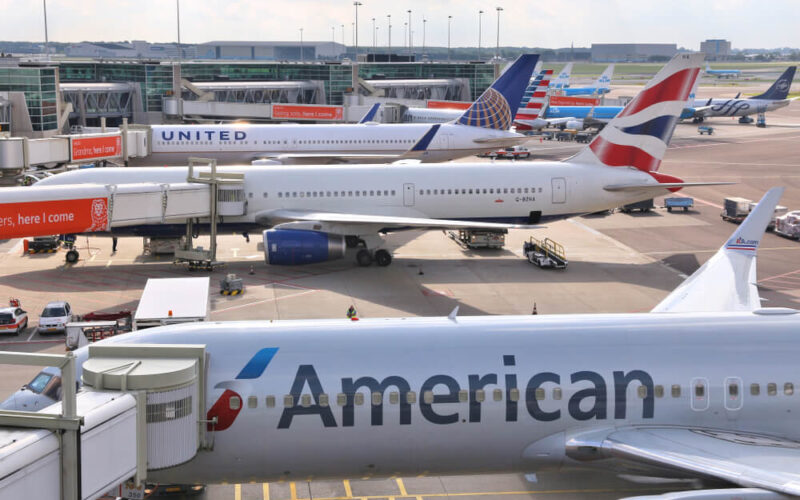In an emotional letter addressed to the Vice President of the United States Mike Pence and the European Commissioner for Home Affairs Ylva Johansson, chief executives of American Airlines (A1G) (AAL), International Airlines Group (IAG) (IAG; the parent company of Aer Lingus, British Airways, Iberia and others), Lufthansa (LHAB) (LHA), and United Airlines pleaded for a “safe and swift restoration of air travel between the United States and Europe.”
The letter raises a lot of questions, especially considering the current situation in the United States, as its COVID-19 cases numbers keep rising at an unprecedented rate. The Council of the European Union (EU) left the United States out of its list of countries whose residents are able to conduct non-essential travel into the EU from outside the Bloc.
While citizens or long-time residents of the EU, including their families, are able to travel to the countries where travel restrictions still apply, the volume of travelers between the United States and the European Union would be different if travel was unrestricted.
“Nobody will benefit from a prolonged closure of this most indispensable corridor for global aviation,” Doug Parker, Willie Walsh, Carsten Spohr, and Scott Kirby ended their collective letter to Mike Pence and Ylva Johansson.
But why are these executives calling for the resumption of travel between Europe and the United States, even when the latter is still facing the full brunt of the pandemic?
Cash cow
Undoubtedly, the North Atlantic corridor is one of the most important transcontinental routes in aviation. Not only it ensures crucial connectivity for travelers, but it is also a cash cow for many airlines across the industry. In August 2019, OAG published an analysis of airline revenues and their most lucrative routes. In first place, generating $1.1 billion of revenue in 2019, was British Airways’ London Heathrow Airport (LHR) to New York’s John F. Kennedy International Airport (JFK) route. Qantas’ Melbourne to Sydney domestic route was in second place, bringing almost $300 million less revenue than BA’s transatlantic itinerary.
In 2019, British Airways earned $14.9 billion (£11.8 billion) of passenger revenue. Thus, the LHR-JFK route alone was responsible for 7% of British Airways’ passenger revenue throughout the year. While the number might look small, but for one route that is pretty impressive, to say the least.
The trend continues throughout the International Airlines Group (IAG) (IAG), the parent company of British Airways.
“IAG’s North American market accounts for almost 30 percent of the Group’s Available seat kilometers (‘ASKs’).” Available Seat Kilometers measures an airline’s available capacity.
“We now serve 33 points in North America making us the largest long-haul carrier into the North Atlantic market and we will continue our strategic growth with our Atlantic Joint Business partner, American Airlines (A1G) (AAL), throughout 2020.“
Thus comes in the second company figuring in the letter, American Airlines (A1G) (AAL). In 2008, the Dallas/Fort Worth-based airline joined British Airways and Iberia to form the Atlantic Joint Business (AJB), a collaborative network on the North Atlantic flight corridor.
In 2019, out of the total 95.8 Available Seat Miles (ASM) on its International network, American Airlines (A1G) (AAL) dedicated 42 billion ASMs (43.8%) to the Atlantic sector alone. Out of the total $11.1 billion earned on its international operations, $4.6 billion were on routes above the Atlantic Ocean. While AA does earn most of its revenue on domestic operations ($30.8 billion) versus its international flights ($11.1 billion), in times such as these every penny counts. Also, AA recently announced a partnership with the New York-based JetBlue (JBLU). The airline plans to expand its transatlantic presence further with the added domestic network of JetBlue (JBLU), broadening its reach of customers. Together with the new joint venture, American also indicated new and resumed routes to Europe, including Greece, Spain and the United Kingdom.
Reaching for the Stars
The other two airline executives, namely Carsten Spohr of Lufthansa (LHAB) (LHA) and Scott Kirby of United Airlines, both represent Star Alliance’s interests. Lufthansa (LHAB) (LHA) and United Airlines were some of the founding members of the alliance in 1997.
For the Germany-based Lufthansa (LHAB) (LHA), 2019 was a fairly difficult year:
“European business was marked by price erosion due to overcapacities throughout the market and the general economic downturn in the Lufthansa Group’s home markets. By contrast, Network Airlines’ long-haul business still performed well, particularly on connections to North America,” stated the company’s latest yearly financial report.
Once again, connections over the Atlantic, marked as America in its report, held a sizable proportion of its revenues. Out of the $24.6 billion (€21.3 billion) earned from flying passengers, $8.2 billion (€7.1 billion) came from America. Again, a very sizable portion of revenue.
On the other side of the Atlantic, Lufthansa’s (LHAB) (LHA) partner in alliance United Airlines is in a similar position to American Airlines (A1G) (AAL). While the majority of revenue is earned on flights within the United States ($26.9 billion), Atlantic operations ($7.3 billion) play an important part in the general well-being of the airline. In total, United Airlines earned $43.2 billion in 2019.
Seasonality
Another pressing issue is the seasonality of the market, especially on the European side. With summer in the Northern Hemisphere drawing to a close, the window of opportunity to earn additional revenue throughout the warm months is also closing.
“Airlines rely on the summer season to provide a financial cushion for the more challenging winter months. But we know that European airlines are set to lose $21 billion this year. There will be no summer cushion,” Rafael Schvartzman, International Air Transport Association (IATA) Regional Vice President of Europe, laid out a grim prediction on June 17, 2020.
And with the unstable revenue environment and no short-term rebound in sight, the closing window might prove very problematic during the oncoming winter months, if revenues continue to downfall.

